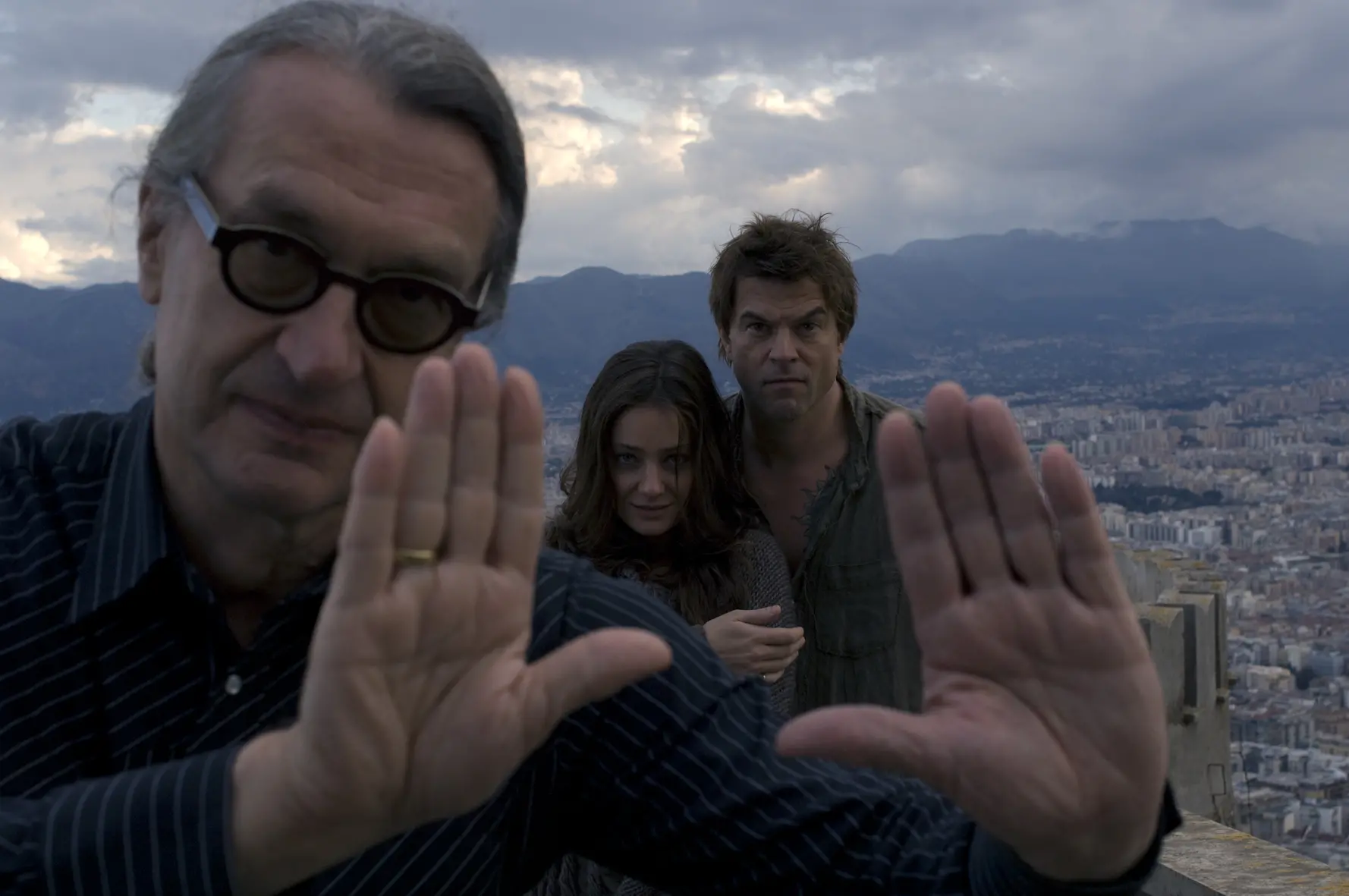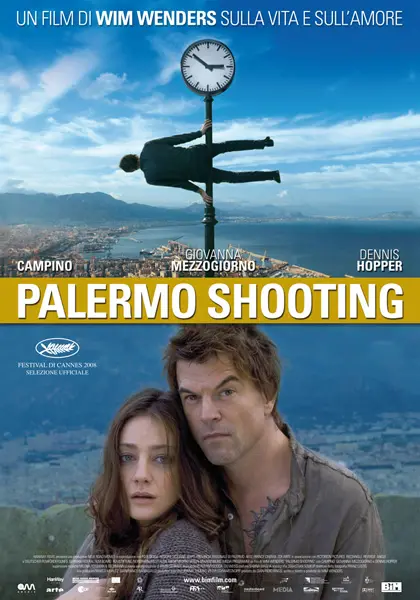

The opening scene, which almost foreshadows the themes broached by the film, is a macabre sequence depicting the mummified bodies in the Capuchin Catacombs of Palermo.
The film then changes scene and register after the accident of Finn, a successful photographer who leads a debauched life in Dusseldorf, and shifts to Palermo, a city of which the director captures the contradictions, complexities, light and shade using the protagonist’s camera.
During one of his walks around the city, Finn comes across the local market of Vucciria, the name of which comes from the French word boucherie (Bucceria), meaning butcher’s, indicating its original use. Here the shouts of the stallholders and the crowd clash with the protagonist’s frame of mind, and he soon comes to a crossroads the Quattro Canti, the Baroque heart of the town where Via Maqueda and Corso Vittorio Emanuele intersect. The current appearance of the octagonal piazza dates back to the 17th century, when it was in the throes of Spanish control: each of the four buildings facing onto it has its own fountain, decorated with statues representing each of the four seasons. The statues in the buildings themselves are of Spanish sovereigns and the patron saints of the town.
The next day the protagonist walks through Kalsa, a neighbourhood that takes its name from the Arabic word Al-Khalisa (the pure one) and bears traces of Islamic control. It is home to the remains of the Church of Santa Maria dello Spasimo, today a summer concert venue.
As he is stalked by death, Finn visits various important locations: he meets photographer Letizia Battaglia at Palazzo Butera, the terrace of which looks out over Via Foro Italico Umberto I; he flees to the top of Mount Pellegrino, which towers above the city and was described by Goethe as “the most beautiful promontory in the world”; he visits Palazzo Abatellis in Via Alloro, a gothic Catalonian building which is today home to the Sicilian Regional Art Gallery. Here he meets Flavia, who is working on restoring the Triumph of Death. The fresco, as the restorer explains, was painted in the 15th century by an unknown Palermitan painter and depicts Death riding a skeleton horse and shooting people of all classes with his arrows, ignoring the poor who beg him to take them to put an end to their suffering.
When one of the arrows that Death tries to hit Finn with hits its mark, Flavia takes the photographer to her apartment in Porta Felice. Located at the end of Corso Vittorio Emanuele, Porta Felice place is a mix of Rennaissance and Baroque styles, and is the gateway to the old town that once allowed access from the sea to the Cassaro, the oldest road in Palermo (now known as Corso Vittorio Emanuele).
Flavia takes Finn to Gangi, her hometown in the Madonie mountains, with the film closing at the break of dawn the next day. The only town in Sicily to have been included in the list of “Gioielli d’Italia” (lit. ‘Gems of Italy’, Gangi is a Medieval town perched on Mount Barone, which was built on the ruins of a Hellenic settlement.
The opening scene, which almost foreshadows the themes broached by the film, is a macabre sequence depicting the mummified bodies in the Capuchin Catacombs of Palermo.
The film then changes scene and register after the accident of Finn, a successful photographer who leads a debauched life in Dusseldorf, and shifts to Palermo, a city of which the director captures the contradictions, complexities, light and shade using the protagonist’s camera.
During one of his walks around the city, Finn comes across the local market of Vucciria, the name of which comes from the French word boucherie (Bucceria), meaning butcher’s, indicating its original use. Here the shouts of the stallholders and the crowd clash with the protagonist’s frame of mind, and he soon comes to a crossroads the Quattro Canti, the Baroque heart of the town where Via Maqueda and Corso Vittorio Emanuele intersect. The current appearance of the octagonal piazza dates back to the 17th century, when it was in the throes of Spanish control: each of the four buildings facing onto it has its own fountain, decorated with statues representing each of the four seasons. The statues in the buildings themselves are of Spanish sovereigns and the patron saints of the town.
The next day the protagonist walks through Kalsa, a neighbourhood that takes its name from the Arabic word Al-Khalisa (the pure one) and bears traces of Islamic control. It is home to the remains of the Church of Santa Maria dello Spasimo, today a summer concert venue.
As he is stalked by death, Finn visits various important locations: he meets photographer Letizia Battaglia at Palazzo Butera, the terrace of which looks out over Via Foro Italico Umberto I; he flees to the top of Mount Pellegrino, which towers above the city and was described by Goethe as “the most beautiful promontory in the world”; he visits Palazzo Abatellis in Via Alloro, a gothic Catalonian building which is today home to the Sicilian Regional Art Gallery. Here he meets Flavia, who is working on restoring the Triumph of Death. The fresco, as the restorer explains, was painted in the 15th century by an unknown Palermitan painter and depicts Death riding a skeleton horse and shooting people of all classes with his arrows, ignoring the poor who beg him to take them to put an end to their suffering.
When one of the arrows that Death tries to hit Finn with hits its mark, Flavia takes the photographer to her apartment in Porta Felice. Located at the end of Corso Vittorio Emanuele, Porta Felice place is a mix of Rennaissance and Baroque styles, and is the gateway to the old town that once allowed access from the sea to the Cassaro, the oldest road in Palermo (now known as Corso Vittorio Emanuele).
Flavia takes Finn to Gangi, her hometown in the Madonie mountains, with the film closing at the break of dawn the next day. The only town in Sicily to have been included in the list of “Gioielli d’Italia” (lit. ‘Gems of Italy’, Gangi is a Medieval town perched on Mount Barone, which was built on the ruins of a Hellenic settlement.

Finn Gilbert, a successful German photographer, decides to leave his hectic life behind and start over in Palermo, after literally staring death in the face after a road accident.